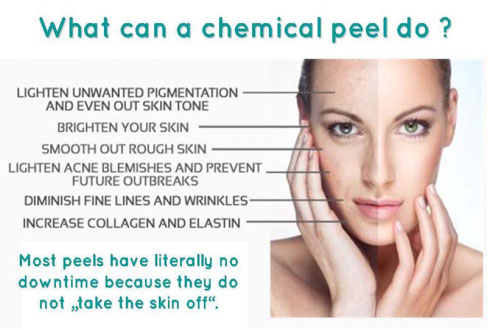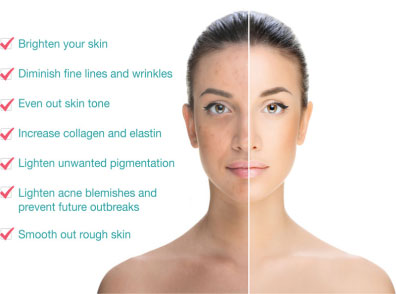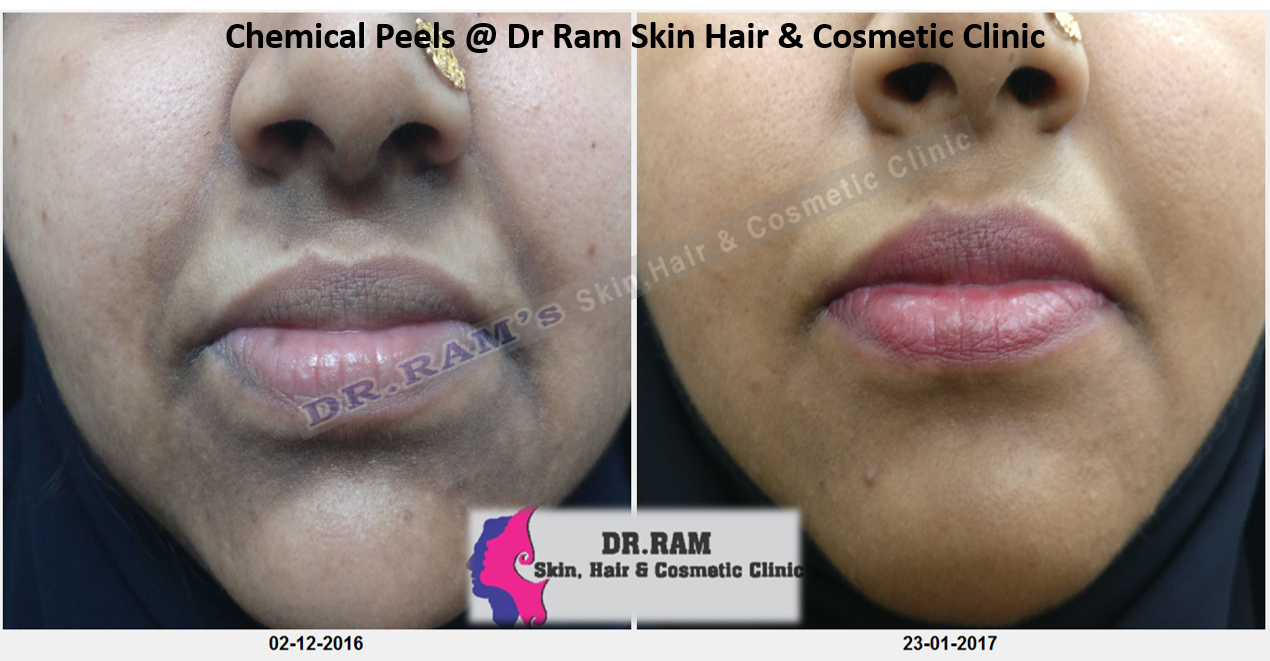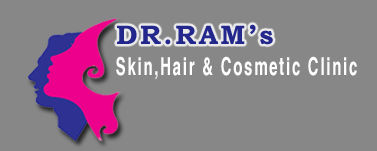Chemical Peels

Chemical Peeling-general facts
Chemical peeling involves scientific and sequential removal (at times microscopic) of the superficial dead layers of skin. The new, regenerated skin is usually smoother and less wrinkled than the old skin.
Indications:
Chemical peels are performed in following conditions:
- Acne /pimples- (along with other medications ) to control the disease quickly so that complications like dark spots, pits/scars can be avoided
- Dark spot/ facial pigmentation- due to pimples, skin ageing, pregnancy or taking birth control pills (melasma)
- Facial glow-improve the look and feel of skin that is dull in texture and colour
- Treat fine lines & wrinkles caused by sun damage, aging and hereditary factors
- Improve the appearance of mild scarring
- Reduce age spots, freckles
- Correcting rough texture of skin
Types of chemical peels:
Expected results:
The effects are immediate glow which one can see immediately after the first session. Also, ideal for pore size reduction and greasiness, elimination or lightening of yellowish or brownish skin discolourations, acne pigmentation . In addition, skin tone and texture will be improved, and your complexion will look clearer, brighter and refreshed.
- Superficial peel - the mildest chemical peel that is safe for use on all skin types. Since it only targets the most superficial layers of the skin, it is ideal to smooth finer lines and improve the skin's texture and tone.
- Medium peel - harsher than superficial peel, much deeper penetration than superficial peels. It is ideal to remove finer wrinkles, pigmentation and blemishes. However, the treated skin requires protection from sun exposure and recovery time may be longer.
- Deep peel - the harshest chemical peel that can penetrate through several layers of skin, effectively treat problems such as deeper wrinkles, severe age and sun spots, etc. It should not be used on dark-skinned patients
Procedure:
A chemical peel should be performed by a well trained dermatologist having good experience & expertise in the procedure. This is as an outpatient treatment. The skin is thoroughly cleansed with an agent that removes excess oils. One or more chemical solutions, such as glycolic acid, trichloroacetic acid, salicylic acid or lactic acid are applied to full face/desired areas. Utmost care is taken to avoid spilling into eyes, also skipping delicate areas of face like near corners of nose & mouth. It is kept for certain amount of time and then washed off.
During the procedure
Most patients experience a warm to somewhat tingling/mild burning sensation that lasts about few minutes & then subsides. Body reaction to peel generally depends upon the type of chemical peel used like:
- Mild redness which temporary & goes off in few days.
- Visible exfoliation/ peeling of skin can occur which lasts for few days
- Only minute scaling can occur after certain peels
Complications:
Chemical peels have been used for more than 50 years and have an excellent safety record. Complications are rare and temporary in hands of expert dermatologists. Few to mention are:
- Persistent redness that may last for longer time.
- Temporary colour change in the skin, especially in females taking birth control pills & persons who do not observe strict sun protection.
- Probably the greatest risk of side effects comes from not following your instructions. Sun exposure, scratching the treated skin, and using makeup before the skin heals can cause unwanted side effects ranging from infection to scarring.
Schedule of chemical peeling:
Generally peeling sessions are done every 2-4 weeks depending upon type of peels use. Patient should undergo 5-6 sessions to have maximum benefit. After that some maintenance peels are must every 4 - 6 weeks or so to have long lasting effects.

Some of the peels routinely done at our clinic:
- Glycolic peel
- Salipeel
- Yellow peel
- Phenol peel
- Jessners peel
- TCA peel
- Lactic peel
- Combination peels
- Sequential peels
- Carbon peel
Our Treatment

